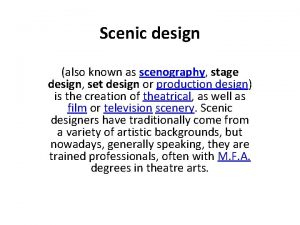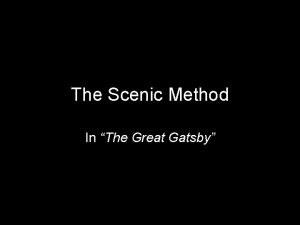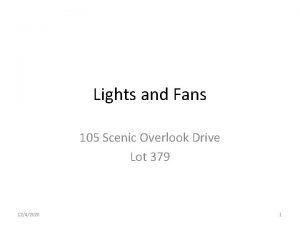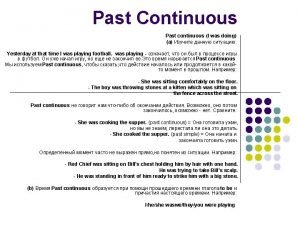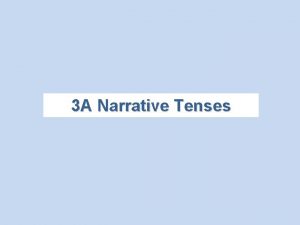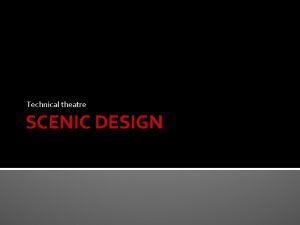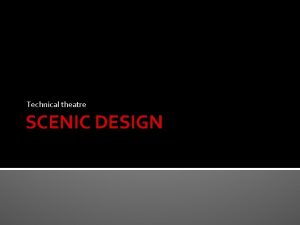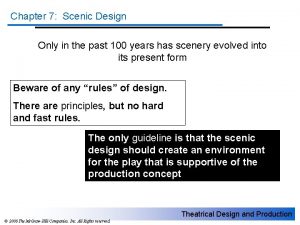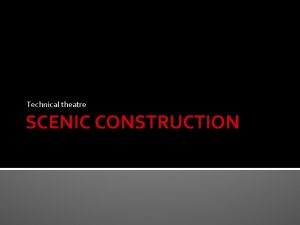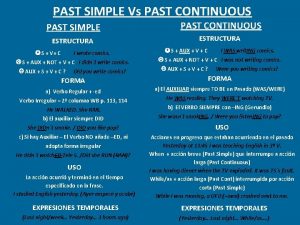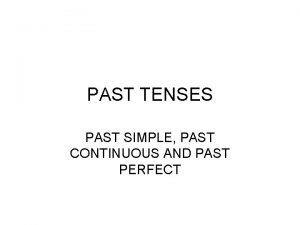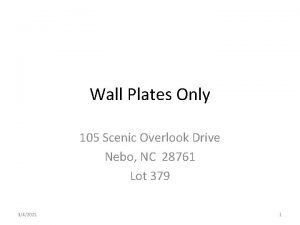Chapter 7 Scenic Design Only in the past































- Slides: 31

Chapter 7: Scenic Design Only in the past 100 years has scenery evolved into its present form Beware of any “rules” of design. There are principles, but no hard and fast rules. The only guideline is that the scenic design should create an environment for the play that is supportive of the production concept Theatrical Design and Production © 2006 The Mc. Graw-Hill Companies, Inc. All Rights reserved.

Chapter 7: Scenic Design Mood and Spirit of the Play Mood refers to the dominant emotional quality of the production Spirit refers to the production concept—the way the director and designers have decided the play should be presented Theatrical Design and Production © 2006 The Mc. Graw-Hill Companies, Inc. All Rights reserved.

Chapter 7: Scenic Design Mood and Spirit of the Play The designer needs to incorporate some elements that suggest the emotional characteristics of the play A gentle romance should use soft curves and delicate colors An intense tragedy should have hard lines, sharp angles, and dark colors Theatrical Design and Production © 2006 The Mc. Graw-Hill Companies, Inc. All Rights reserved.

Chapter 7: Scenic Design Historical Period of the Play If the design style being used is based in realism, then period needs to be a consideration The scenic designer wants to provide historically accurate visual clues to help the audience identify the period of the play Theatrical Design and Production © 2006 The Mc. Graw-Hill Companies, Inc. All Rights reserved.

Chapter 7: Scenic Design Historical Period of the Play Historical research can be looking at actual pieces from the play’s period OR researching pictures of those pieces in the library Understanding the general motifs and idiosyncrasies of the period is most important. You do not have to duplicate every variation and nuance Theatrical Design and Production © 2006 The Mc. Graw-Hill Companies, Inc. All Rights reserved.

Chapter 7: Scenic Design Locale of the Play If the design style being used is based in realism, then locale needs to be a consideration Geography and climate have a significant impact on the design of buildings and their furnishings When establishing locale in the interior of a building, a designer should take into consideration the time period as well as the socioeconomic background Decorative properties and floor treatments can help create a believable environment Theatrical Design and Production © 2006 The Mc. Graw-Hill Companies, Inc. All Rights reserved.

Chapter 7: Scenic Design Socioeconomic Level and Personality of the Characters Most realistic sets give some indication of what sort of characters will inhabit the environment of the play The designer normally uses set and decorative props as tools to achieve this effect A living room decorated with inexpensive yet tasteful furnishings suggests one type of Decorative properties occupant. and floor treatments create a yet Onecan withhelp expensive believable environment gaudy furnishings suggests another Theatrical Design and Production © 2006 The Mc. Graw-Hill Companies, Inc. All Rights reserved.

Chapter 7: Scenic Design Season of the Year It is difficult for a scenic designer to provide more than a cursory indication of season If the play takes place in the summer, the designer can have the doors open or use screens in the doors and windows The selection of colors and fabrics can also help create a feeling of season; however, the projection of season is usually left up to the lighting and costume designers Decorative properties and floor treatments can help create a believable environment Theatrical Design and Production © 2006 The Mc. Graw-Hill Companies, Inc. All Rights reserved.

Chapter 7: Scenic Design Elements of Composition Scenic designers must be able to draw freely and easily Taking art classes is the best way to become adept at drawing and painting Manipulation of the compositional elements is the root of any design Line Form Mass Value Color Theatrical Design and Production © 2006 The Mc. Graw-Hill Companies, Inc. All Rights reserved.

Chapter 7: Scenic Design Elements of Composition Line defines form Dimension, quality, and character define the characteristics of any line Objects drawn with strong, bold, angular lines indicate power, dominance, and purpose Cartooning is almost always based on the principle of line simplification Simplifying or altering the line within a scenic design creates character definition Objects drawn with soft, curvilinear, and lightweight lines can indicate weakness Theatrical Design and Production © 2006 The Mc. Graw-Hill Companies, Inc. All Rights reserved.

Chapter 7: Scenic Design Elements of Composition Form refers to the space enclosed by a line The evocative characteristics of the line defining the form will dictate the emotional qualities of the form The character of the line will create a perceptual key that helps explain the psychological nature of the object depicted Theatrical Design and Production © 2006 The Mc. Graw-Hill Companies, Inc. All Rights reserved.

Chapter 7: Scenic Design Elements of Composition Mass is the three-dimensional manifestation of an enclosed form The exaggeration of either form or mass can be used to stylize a design By exaggerating height, width, or depth, we can change the character of the object Theatrical Design and Production © 2006 The Mc. Graw-Hill Companies, Inc. All Rights reserved.

Chapter 7: Scenic Design Elements of Composition Value Purity, truth, and honor Evil, dishonesty, dishonor Purity, truth, and honor Value refers to the relative lightness or darkness of a line, form, or mass The emotional reaction to the value of an object has become ingrained in the core of Western thought Evil, dishonesty, dishonor Theatrical Design and Production © 2006 The Mc. Graw-Hill Companies, Inc. All Rights reserved.

Chapter 7: Scenic Design Elements of Composition Color Although scenic objects are normally painted to appear as they are in life… substituting an unexpected hue can achieve interesting results The countryside for Brigadoon could be painted in PLAID! Theatrical Design and Production © 2006 The Mc. Graw-Hill Companies, Inc. All Rights reserved.

Chapter 7: Scenic Design Practicality of the Setting Any scenic design must fulfill utilitarian functions before it can be considered anything more than a pretty picture The designer must take into consideration the needs of the director, the needs of the actors, the demands of construction, and budgets of time and money Theatrical Design and Production © 2006 The Mc. Graw-Hill Companies, Inc. All Rights reserved.

Chapter 7: Scenic Design Practicality of the Setting Needs of the Director The set design must follow the production concept of the director The design must also accommodate the blocking and other stage business that the director has in mind If the director wants the heroine to make a grand entrance down a flight of stairs, the designer must place the stairs in a prominent position The director and scenic designer discuss these directorial needs during early production conferences Theatrical Design and Production © 2006 The Mc. Graw-Hill Companies, Inc. All Rights reserved.

Chapter 7: Scenic Design Practicality of the Setting Needs of the Actors Windows that won’t open The set must function properly, efficiently, and as planned It must provide a safe environment Doors that won’t close Slippery floors Actors must be able to concentrate in order to perform properly The last thing they need is anything that would break their concentration Theatrical Design and Production © 2006 The Mc. Graw-Hill Companies, Inc. All Rights reserved.

Chapter 7: Scenic Design Practicality of the Setting Construction Demands A set’s complexity is directly related to the intricacy of the design The designer must be aware of construction challenges and determine how thesis pieces can be constructed and rigged Elements such as a spinning staircase may create construction challenges that cannot be solved by ordinary scenic-construction techniques Before construction starts, the scenic designer reviews the plans with the lighting designer to make sure the set can be lit effectively Theatrical Design and Production © 2006 The Mc. Graw-Hill Companies, Inc. All Rights reserved.

Chapter 7: Scenic Design Practicality of the Setting Time and Fiscal Budgets The scenic designer is ultimately responsible for the timely construction of scenery and properties within the budget allowed In commercial theatre, the producer approves the plans and then solicits bids for the construction In regional, educational, and community theatres, where they build their own sets, it is up to the scenic designer and technical director to make sure they stay within the approved budget Theatrical Design and Production © 2006 The Mc. Graw-Hill Companies, Inc. All Rights reserved.

Chapter 7: Scenic Design Visual Presentation of Scenic Designs Sketches Thumbnail sketches are rough drawings, usually in pencil, that show the general composition of the set but very little detail Theatrical Design and Production © 2006 The Mc. Graw-Hill Companies, Inc. All Rights reserved.

Chapter 7: Scenic Design Visual Presentation of Scenic Designs Sketches Renderings Are finished color sketches of the set Drawn to scale Complete in terms of type, style, location of furniture, trim, and decorative touches Quality renderings also give indications of lighting Theatrical Design and Production © 2006 The Mc. Graw-Hill Companies, Inc. All Rights reserved.

Chapter 7: Scenic Design Visual Presentation of Scenic Designs Models Functional models are threedimensional equivalents of a thumbnail sketch. Their purpose is to help the design team visualize the basic composition of the scene design. The functional model is built to scale, quickly constructed, and rarely painted Theatrical Design and Production © 2006 The Mc. Graw-Hill Companies, Inc. All Rights reserved.

Chapter 7: Scenic Design Visual Presentation of Scenic Designs Models Production models provide a complete visualization of the scenic designer’s concept. Production models are built to scale, fully painted, and completely decorated with all of the furniture, props, and set dressing used in the production Theatrical Design and Production © 2006 The Mc. Graw-Hill Companies, Inc. All Rights reserved.

Chapter 7: Scenic Design Visual Presentation of Scenic Designs Computer Presentations Every traditional medium used to create scene design sketches can now be produced with a computer. Most drafting programs have a three-dimensional component, and animation programs an provide time-based visualizations of scene shifts Theatrical Design and Production © 2006 The Mc. Graw-Hill Companies, Inc. All Rights reserved.

Chapter 7: Scenic Design Visual Presentation of Scenic Designs Designer’s Plans Sketches and models may give a clear indication of the scenic designer’s intention Ground Plan Front Elevations However, they do not give the technical director Detail Drawings or carpenters the information they need to build the set Full-scale Drawings That information comes in a series of Sight-line Drawings mechanical drawings (designer’s plans) that depict every detail of the set with exact Painter’s Elevations measurements of its components Theatrical Design and Production © 2006 The Mc. Graw-Hill Companies, Inc. All Rights reserved.

Chapter 7: Scenic Design Visual Presentation of Scenic Designs Designer’s Plans Ground Plan It is a scale mechanical drawing showing the top view of a setting in its proper position on the stage The location and measurement are given for all architectural features of the set, onstage and off Theatrical Design and Production © 2006 The Mc. Graw-Hill Companies, Inc. All Rights reserved.

Chapter 7: Scenic Design Visual Presentation of Scenic Designs Designer’s Plans Front Elevations These show a front view of the set as if it were flattened into a single plane The main purpose of these scale drawings is to indicate all of the vertical measurements that cannot be shown on the ground plan Theatrical Design and Production © 2006 The Mc. Graw-Hill Companies, Inc. All Rights reserved.

Chapter 7: Scenic Design Visual Presentation of Scenic Designs Designer’s Plans Detail Drawings Detailed pieces, such as an elaborate fireplace or an intricately designed stained-glass panel, need to be drawn in a larger scale Theatrical Design and Production © 2006 The Mc. Graw-Hill Companies, Inc. All Rights reserved.

Chapter 7: Scenic Design Visual Presentation of Scenic Designs Designer’s Plans Full-scale Drawings A few of the smallest features of a set should be drawn in full scale, or actual size If the design is unusually intricate or the object rather small, such as a wallpaper pattern, it is easier and faster to draw in full scale Theatrical Design and Production © 2006 The Mc. Graw-Hill Companies, Inc. All Rights reserved.

Chapter 7: Scenic Design Visual Presentation of Scenic Designs Designer’s Plans Sight-line Drawings A scale drawing of sightings that extend from the extreme seats to any position on the stage Sight-line drawings are used to determine how much of the stage and backstage will be visible from specific auditorium seats Theatrical Design and Production © 2006 The Mc. Graw-Hill Companies, Inc. All Rights reserved.

Chapter 7: Scenic Design Visual Presentation of Scenic Designs Designer’s Plans Painter’s Elevations Painter’s elevations are front elevations of the set, drawn on watercolor board and painted to show not only the colors but also the painting techniques that will be used in finishing the set These are renderings that the scenic artist and paint crew use when painting the set Theatrical Design and Production © 2006 The Mc. Graw-Hill Companies, Inc. All Rights reserved.
 Unit set design
Unit set design John graves scenic riverway
John graves scenic riverway The telephone rang inside startlingly
The telephone rang inside startlingly Scenic serene sublime
Scenic serene sublime Rob thorburn
Rob thorburn Scenic painting theatre
Scenic painting theatre Lower delaware national wild and scenic river
Lower delaware national wild and scenic river Scenic view javafx
Scenic view javafx Scenic gold seed treatment
Scenic gold seed treatment Black vanity light
Black vanity light Leave only footprints take only photos
Leave only footprints take only photos Past progressive negative examples
Past progressive negative examples Past perfect and past perfect simple
Past perfect and past perfect simple Past simple past continuous past perfect timeline
Past simple past continuous past perfect timeline Past perfect continuous past continuous
Past perfect continuous past continuous Participle 2 таблица
Participle 2 таблица Narrative tenses past simple past perfect past continuous
Narrative tenses past simple past perfect past continuous Continuos
Continuos Past simple past continuous present perfect
Past simple past continuous present perfect What is narrative tense
What is narrative tense Past simple vs past continuous vs present perfect exercises
Past simple vs past continuous vs present perfect exercises Hát kết hợp bộ gõ cơ thể
Hát kết hợp bộ gõ cơ thể Ng-html
Ng-html Bổ thể
Bổ thể Tỉ lệ cơ thể trẻ em
Tỉ lệ cơ thể trẻ em Chó sói
Chó sói Thang điểm glasgow
Thang điểm glasgow Hát lên người ơi
Hát lên người ơi Môn thể thao bắt đầu bằng chữ f
Môn thể thao bắt đầu bằng chữ f Thế nào là hệ số cao nhất
Thế nào là hệ số cao nhất Các châu lục và đại dương trên thế giới
Các châu lục và đại dương trên thế giới Công thức tính thế năng
Công thức tính thế năng
